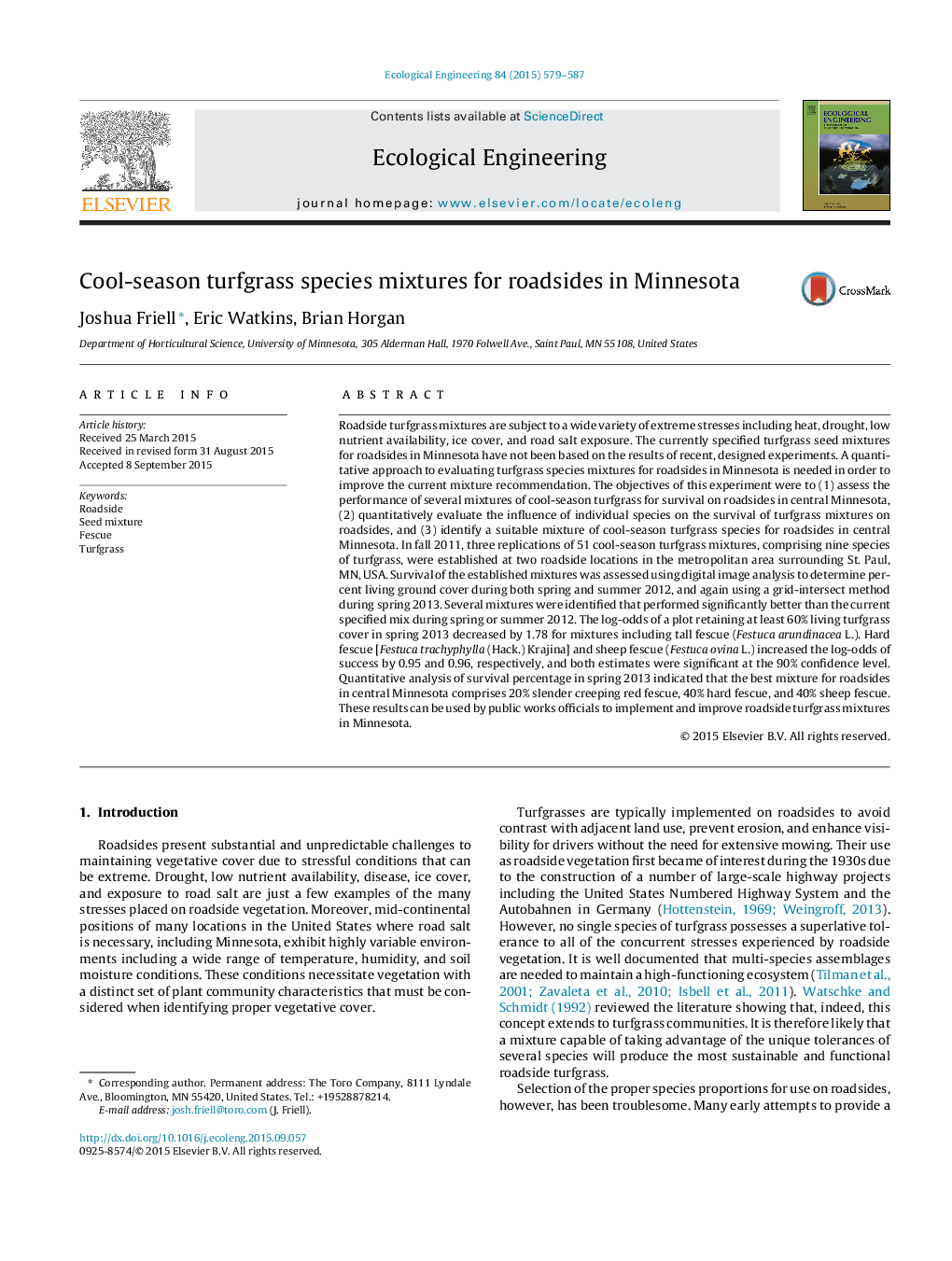| کد مقاله | کد نشریه | سال انتشار | مقاله انگلیسی | نسخه تمام متن |
|---|---|---|---|---|
| 4388828 | 1618015 | 2015 | 9 صفحه PDF | دانلود رایگان |
Roadside turfgrass mixtures are subject to a wide variety of extreme stresses including heat, drought, low nutrient availability, ice cover, and road salt exposure. The currently specified turfgrass seed mixtures for roadsides in Minnesota have not been based on the results of recent, designed experiments. A quantitative approach to evaluating turfgrass species mixtures for roadsides in Minnesota is needed in order to improve the current mixture recommendation. The objectives of this experiment were to (1) assess the performance of several mixtures of cool-season turfgrass for survival on roadsides in central Minnesota, (2) quantitatively evaluate the influence of individual species on the survival of turfgrass mixtures on roadsides, and (3) identify a suitable mixture of cool-season turfgrass species for roadsides in central Minnesota. In fall 2011, three replications of 51 cool-season turfgrass mixtures, comprising nine species of turfgrass, were established at two roadside locations in the metropolitan area surrounding St. Paul, MN, USA. Survival of the established mixtures was assessed using digital image analysis to determine percent living ground cover during both spring and summer 2012, and again using a grid-intersect method during spring 2013. Several mixtures were identified that performed significantly better than the current specified mix during spring or summer 2012. The log-odds of a plot retaining at least 60% living turfgrass cover in spring 2013 decreased by 1.78 for mixtures including tall fescue (Festuca arundinacea L.). Hard fescue [Festuca trachyphylla (Hack.) Krajina] and sheep fescue (Festuca ovina L.) increased the log-odds of success by 0.95 and 0.96, respectively, and both estimates were significant at the 90% confidence level. Quantitative analysis of survival percentage in spring 2013 indicated that the best mixture for roadsides in central Minnesota comprises 20% slender creeping red fescue, 40% hard fescue, and 40% sheep fescue. These results can be used by public works officials to implement and improve roadside turfgrass mixtures in Minnesota.
Journal: Ecological Engineering - Volume 84, November 2015, Pages 579–587
